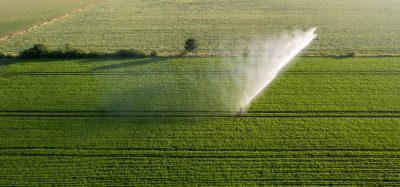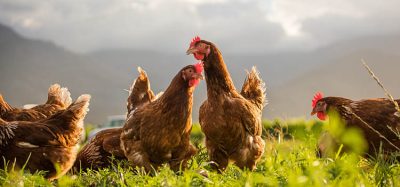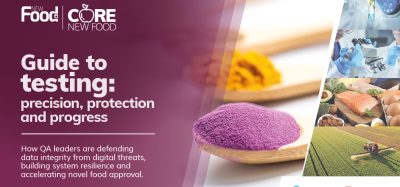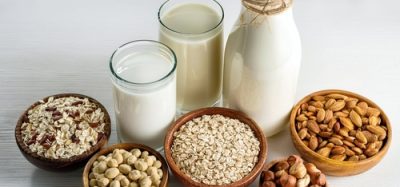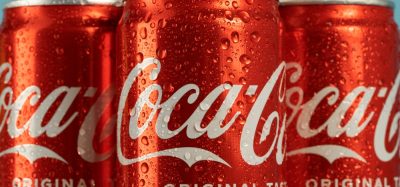Prolonged shelf life of MAP fish
Posted: 3 May 2005 | Anlaug Ådland Hansen, Dept. of Animal and Aquacultural Sciences and Thomas Eie, Dept. Of Chemistry, Biotechnology and Food Science, Matforsk AS, Norwegian Food Research Institute, Norwegian University of Life Sciences | No comments yet
Modified atmosphere packaging (MAP) of fish extends the shelf life of high quality products at low temperatures by inhibiting bacterial growth, oxidative reactions and unwanted components such as TMA (trimethylamine). CO2 is the most important gas used in MAP because of its negative effect on bacterial growth.
An initial alteration of the gaseous environment surrounding the product, modified from its initial condition, is defined as modified atmosphere packaging (MAP) (Brody, 1989). Different forms of MAP have been used for several decades (Coyne, 1933) and MAP fish is now a popular product in many markets making fresh skinned and boned fishfillets convenient for consumers.
Modified atmosphere packaging (MAP) of fish extends the shelf life of high quality products at low temperatures by inhibiting bacterial growth, oxidative reactions and unwanted components such as TMA (trimethylamine). CO2 is the most important gas used in MAP because of its negative effect on bacterial growth. An initial alteration of the gaseous environment surrounding the product, modified from its initial condition, is defined as modified atmosphere packaging (MAP) (Brody, 1989). Different forms of MAP have been used for several decades (Coyne, 1933) and MAP fish is now a popular product in many markets making fresh skinned and boned fishfillets convenient for consumers.
Modified atmosphere packaging (MAP) of fish extends the shelf life of high quality products at low temperatures by inhibiting bacterial growth, oxidative reactions and unwanted components such as TMA (trimethylamine). CO2 is the most important gas used in MAP because of its negative effect on bacterial growth. An initial alteration of the gaseous environment surrounding the product, modified from its initial condition, is defined as modified atmosphere packaging (MAP) (Brody, 1989). Different forms of MAP have been used for several decades (Coyne, 1933) and MAP fish is now a popular product in many markets making fresh skinned and boned fishfillets convenient for consumers.
Different gases and their function in MAP
The gases used in modified atmosphere packaging of fish are mostly carbon dioxide (CO2), nitrogen (N2) and oxygen (O2). The gas mixture depends on what kind of product is being packed. MAP of lean fishes and fish with a high content of TMAO (trimethylamine oxide), for example cod and coalfish, often contain O2 combined with CO2; N2, if necessary, or CO2 and N2. An example of a gas mixture is 60% CO2, 20-40% O2 and 0-20% N2. In MAP of fat fish (e.g. salmon and trout) the oxygen is removed to avoid oxidation of the fat and only CO2 and N2 are used. Both salmon and trout have insignificant amounts of TMAO. A gas mixture for these species can be 60% CO2 and 40% N2. MAP can enhance the quality and prolong the shelf life of fresh fish because of the antimicrobial effect of CO2. The mechanisms of CO2 inhibition remain unclear, yet there are two major theories explaining the CO2 inhibition of cell growth: Firstly, that CO2 inhibits enzymatic reactions critical for growth and secondly that CO2 affects the permeability of the cell membrane. Still the CO2 must be dissolved into the product to achieve inhibition of bacterial growth (Gill & Penney, 1988). In modified atmosphere packages without oxygen, the microbial population will be shifted from growth of aerobic spoilage bacteria (e.g. Pseudomonas) to growth of less harmful anaerobic bacteria (e.g. lactic acid bacteria). To reduce the growth of anaerobic pathogenic bacteria, such as Clostridium botulinum, oxygen can be introduced into the MA-package. To prevent toxin production a gas mixture of equal parts of O2 and CO2 is preferred (Huss, 1980). Safe and hygienic production is always necessary with MAP and any kind of seafood to avoid pathogenic bacteria being present in fish products. TMA (trimethylamine) is a negative sensory component that influences the odour and taste of the fish. O2 prevents reduction of TMAO to TMA (trimethylamine) since the bacteria will use the O2 in the headspace of the package instead of the oxygen bounded in TMAO. There are differences in the TMAO content depending on fish specie. As an example, there is more TMA in cod than in salmon. As a difference to CO2 and O2, N2 functions only as an inert filler gas to counteract packaging collapse and increased liquid loss.
Changes in the initial gas mixture during storage
During storage there will be changes in the initial gas mixture in headspace because the CO2 dissolves into the seafood product. An oxygen transmission will also occur depending on the oxygen permeability of the packaging material or, in worst-case, if any leakage should occur. A gas mixture of 60% CO2 and 40% N2 at the time of packaging may be reduced to below 50% CO2 and above 50% N2 after one week of storage, owing to CO2 absorption into the fish muscle. The amount and composition of the fat that is present and the total composition of the exposed surfaces or muscle tissue affect CO2 solubility in muscle tissue. CO2 is 3-8 times more soluble in organic (non-polar) solvents than in water. The solubility of CO2 in fats is higher than with other gases (10 x O2 and 17 x N2). The fat tissue and lipid membranes are not barriers to CO2 movement once the tissue is saturated. Excess CO2 is able to freely move through the fatty layer and become dissolved into the water phase of the muscle (Mitz, 1979). The solubility is also affected by the pH of the tissue. Since CO2 can hydrate and dissociate in water, there will be different species of CO2, varying as a function of the pH and other factors. More than 99% of dissolved CO2 in pure water or in unbuffered salt solution is actually in the physical form of CO2. At pH values less than 8, as in seafood, the concentration of carbonate ions may be neglected and most of it is present as the liquid form of CO2. It is only in this form that CO2 has an inhibitory effect on bacterial growth (Gill, 1988). Salmon often have lower muscle tissue pH than cod (below 6,5 in salmon compared to 7,0 in cod). Furthermore, the pH is often lower for farmed fish compared to wild caught fish. However, different buffering capacity and chemical composition (level of unsaturated fat) seems to even out the difference of pH and its effect on solubility of CO2.
Major factors affecting the properties of MAP
CO2 absorption, and therefore the inhibition of bacterial growth, increase with decreasing temperature (Gill & Tan, 1979a). Therefore the shelf life of MAP fish is strongly influenced by the temperature, as CO2-absorption increases with decreasing temperature. Low storage temperature itself can prolong the shelf life, but in the case of MAP the effect of CO2 is increased with a temperature as close to 0°C as possible. This is a challenge during the whole distribution chain, but is vital to achieve the required shelf life and safety of modified atmosphere packaged seafood. The initial microbiological quality of the fish product must be good for modified atmosphere packaging. Undamaged fish – newly slaughtered, or caught, and handled hygienically – is therefore necessary to achieve the necessary prolongation in shelf life of MAP. Gas to product ratio (g/p-ratio) and the initial CO2 concentration in the gas phase are two major factors determining the amount of dissolved CO2 and thereby the effect of MAP (Devlieghere et al., 1998). The higher solubility of CO2 at increasing ratio of headspace to meat volume is due to a higher partial pressure of CO2 at equilibrium. To achieve a long shelf life, a g/p-ratio of 3:1 is optimal, but this results in a less transport-efficient package, providing small volumes of product per total package volume. A lower ratio will lead to less CO2 dissolved into the product, due to reduced partial CO2-pressure in the atmosphere when CO2 dissolves into the product. If 100% of CO2 is used and/or the g/p-ratio is low, it can lead to a vacuum-effect or packaging collapse as the CO2 is dissolved into the product. This can result in deformation of the package. By adding some N2 and increasing the g/p-ratio this negative effect will be prevented. Another possibility is to add CO2 in excess to the quantity required for saturating the product at atmospheric pressure, for example by adding a CO2-emitter.
CO2-emitter
A CO2-emitter, which looks similar to a humidity absorber, releases CO2 after the package has been sealed. A CO2-emitter also acts as a humidity absorber and the liquid present in the bottom of the tray activates its CO2-production. The CO2-emitter contributes to maintaining the CO2-level in the atmosphere of the package, thereby making it possible to reduce the g/p-ratio. This may be cost effective because the transport costs are usually related to the volume of the packages and not the weight of the product. CO2-emitters can also counteract package collapse caused by the CO2 solubility in the food. Dimensioning of the CO2-emitter decides whether it maintains the initial CO2-level or increases that level, which can be kept during the whole storage period. Another advantage is that it can compensate for the adsorbed CO2 from the first day of packaging. This can lead to an additional positive effect on the inhibition growth compared to MAP without any CO2-emitter. Analyses of the gas mixture in MAP with g/p-ratio 3:1, show that the CO2-level is reduced from 60% to just above 40% after only four days of storage and this level is kept during the whole storage period. Packages with a CO2-emitter and a g/p-ratio of 1:1 can have approximately 70% CO2 after four days of storage and keep this excess of CO2 during the whole storage period, depending on the dimension of the CO2-emitter.
Changes of liquid holding capacity
The CO2 concentration can be considered in relation to the effect on liquid holding capacity in addition to the negative effect on bacterial growth. The N2 content makes it possible to reduce the CO2-level. A common concentration of CO2 is 50-60%, which is necessary to achieve the required properties of MAP. An increased amount of CO2 results in increased inhibition of bacterial growth, but it can also lead to increased liquid loss. However, this seems to depend on the fish product. A super fresh (pre-rigor) fish product can have a higher liquid loss than fish packaged a few days later (post-rigor) and this is the case for both vacuum packaged fish and for MAP. So an increased liquid loss is not equal to an increased level of CO2, but MAP and vacuum packaging leads to higher liquid loss compared to fish stored in air. To compensate for this a liquid absorber is used in MAP, since liquid inside the package is not very attractive to the consumer.
Conclusion
MAP of fish can prolong the shelf life of fresh fish and make a more convenient product for the consumer. Four major factors are important for a successful MAP product: low storage temperature; good hygienic quality of the fish product; a gas mixture containing sufficient amounts of CO2 and a recommended level of the gas/product-ratio. A CO2-emitter can provide for an excess supply of CO2 that can compensate for a reduced g/p-ratio and thereby reduce the transport costs of MAP fish, providing maximum effect of the MAP and avoiding packaging collapse during storage.
References
Brody, A. L. (1989). Modified atmosphere packaging of seafoods. In A. L. Brody (Ed.), Controlled/Modified Atmosphere/Vacuum Packaging of Foods (pp. 59-65). Trumbull, Connecticut, USA: Food & Nutrition Press, Inc. Coyne, F. P. (1933). The effect of carbon dioxide on bacterial growth with reference to preservation of fish. Journal of the Society of Chemical Industry, 52(Jan. 27), 19T-24T. Devlieghere, F., Debevere, J., & Van Impe, J. (1998). Concentration of carbon dioxide in the water-phase as a parameter to model the effect of a modified atmosphere on microorganisms. International Journal of Food Microbiology, 43(1-2), 105-113. Gill, C. O. (1988). The Solubility of Carbon-Dioxide in Meat. Meat Science, 22(1), 65-71. Gill, C. O., & Penney, N. (1988). The Effect of the Initial Gas Volume to Meat Weight Ratio on the Storage Life of Chilled Beef Packaged under Carbon-Dioxide. Meat Science, 22(1), 53-63. Gill, C. O., & Tan, K. H. (1979). Effect of carbon dioxide on growth of Pseudomonas fluorescens. Appl Environ Microbiol, 38(2), 237-240. Huss, H. H. (1980). Distribution of Clostridium-Botulinum. Applied and Environmental Microbiology, 39(4), 764-769. Mitz, M. A. (1979). Co2 Biodynamics – New Concept of Cellular Control. Journal of Theoretical Biology, 80(4), 537-551.



